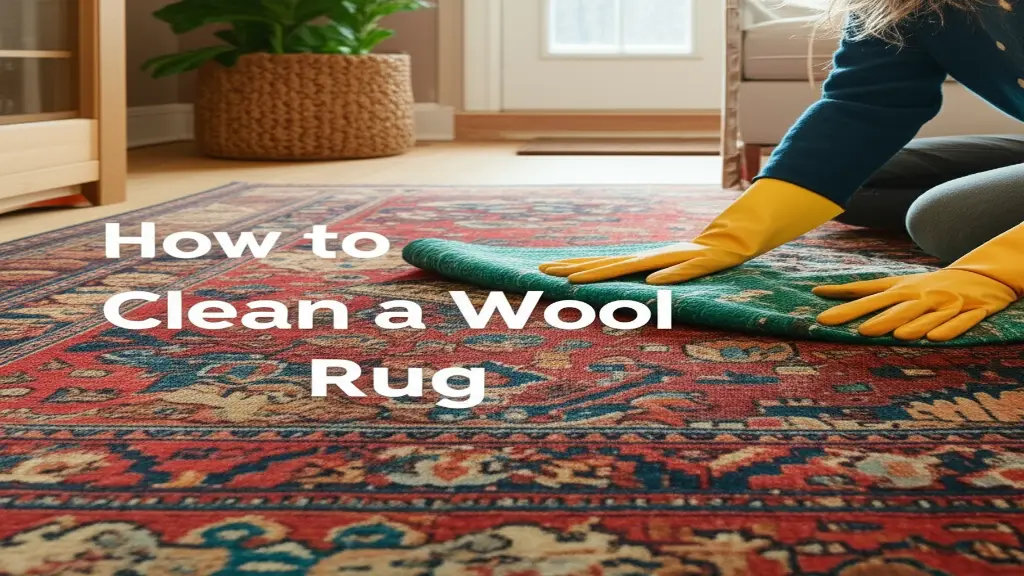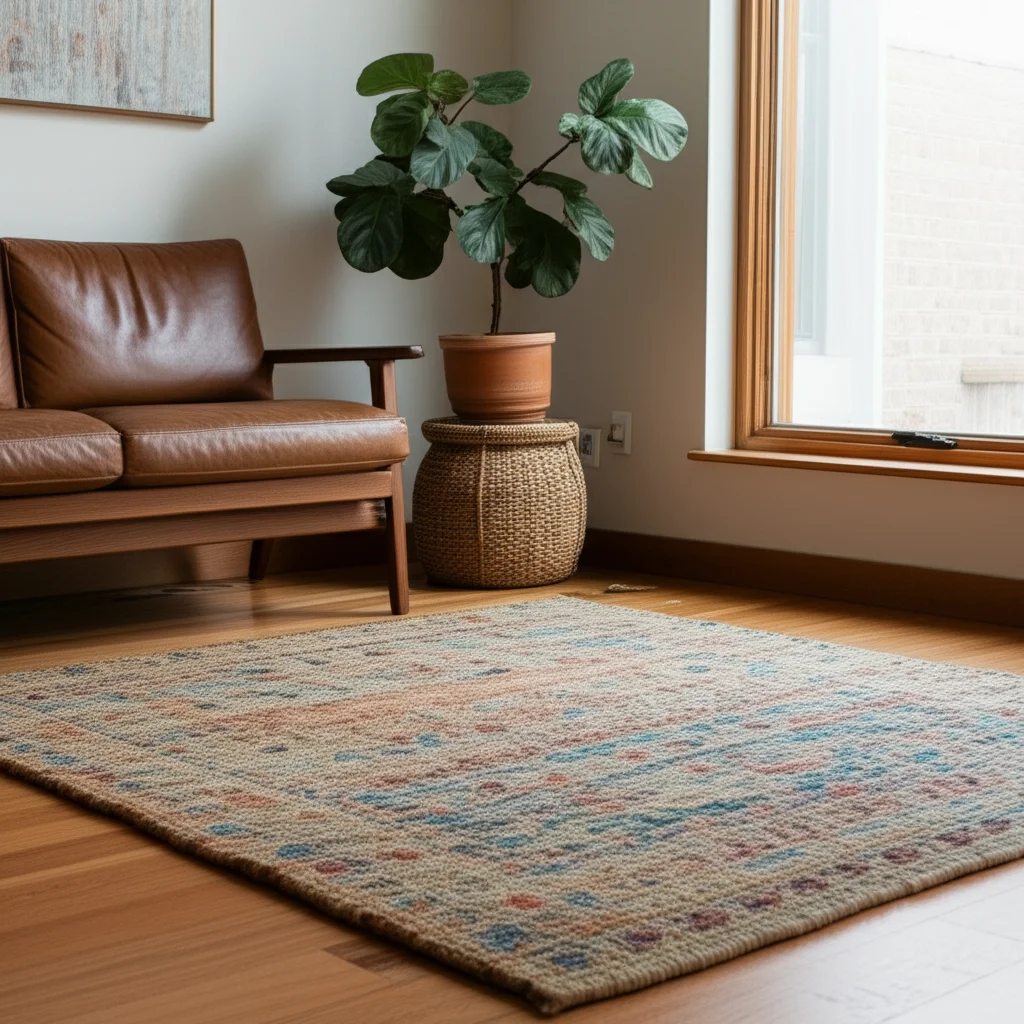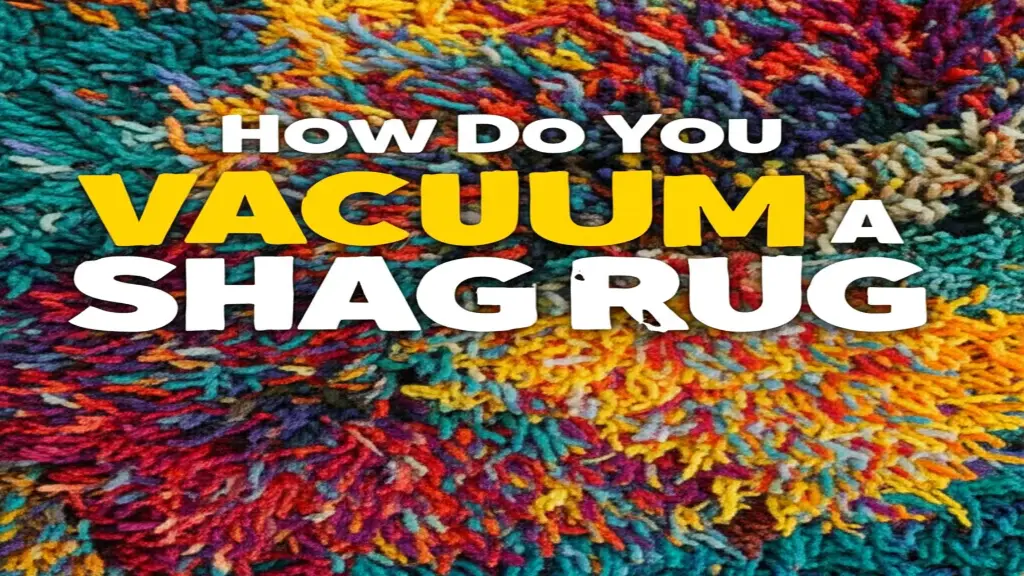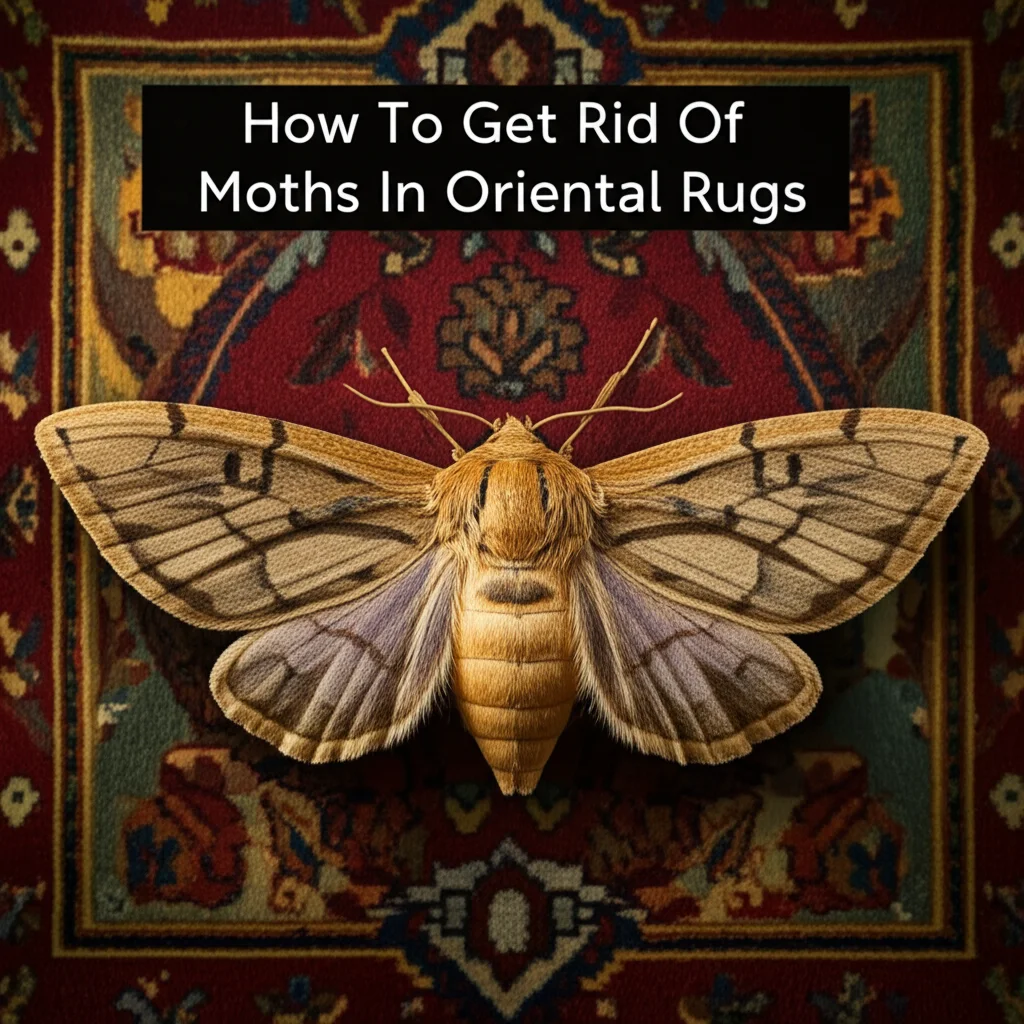· Todd Martin · Rug Cleaning · 8 min read
How Do You Clean A Wool Rug

How to Clean a Wool Rug: A Simple Guide
Wool rugs add warmth and elegance to your home, but they need careful cleaning to stay beautiful. Regular vacuuming, quick spot cleaning, and occasional deep cleaning can keep your rug in great shape.
Always use gentle, wool-safe products and avoid harsh chemicals or excessive water. For tough stains or heavy soiling, professional cleaning may be the best option.
Key Points
- Regular vacuuming helps prevent dirt buildup in wool rugs.
- Spot clean spills immediately with mild soap or vinegar solutions.
- Deep cleaning should be done cautiously, using wool-safe detergents.
- Avoid bleach, ammonia, or soaking to prevent damage.
- Professional cleaning is recommended for stubborn stains or delicate rugs.
How to Clean a Wool Rug: Daily Maintenance
Regular maintenance prevents dirt from embedding in wool fibers, preserving your rug’s appearance and longevity. Vacuuming is the cornerstone of this routine.
- Frequency: Vacuum at least once a week, or more in high-traffic areas. New rugs may shed fibers initially, so vacuum twice weekly for the first few months.
- Vacuum Type: Use a vacuum with a beater bar set to low or medium to avoid pulling fibers. For rugs with fringes, use an upholstery attachment to prevent tangling.
- Technique: Vacuum in multiple directions to loosen dirt. Periodically vacuum the underside, especially if using a rug pad, to remove trapped debris.
For specific vacuuming techniques, especially for shag wool rugs, see How to Vacuum a Shag Rug.
| Maintenance Task | Frequency | Tools Needed |
|---|---|---|
| Vacuuming | Weekly (2x for new rugs) | Vacuum with beater bar, upholstery attachment |
| Underside Vacuum | Monthly | Vacuum |
| Fringe Cleaning | As needed | Upholstery attachment |
How to Clean a Wool Rug: Spot Cleaning Tips
Spills and stains are inevitable, but quick action can prevent permanent damage. Always act promptly and use wool-safe methods.
- Blot, Don’t Rub: Use a clean, white cloth or paper towel to blot spills. Rubbing pushes stains deeper into the fibers.
- Test Solutions: Test any cleaning solution on a small, hidden area to ensure it won’t cause color loss or damage.
- Common Stains:
- Liquid Stains (e.g., juice, coffee): Blot excess liquid, then dab with a mix of cold water and a drop of mild dish soap (e.g., Dawn Ultra Free and Clear). Rinse with clean water and blot dry.
- Greasy Stains (e.g., oil, butter): Sprinkle cornstarch or talcum powder, wait 15–30 minutes, and vacuum. If needed, use a wool-safe dry cleaning solvent.
- Pet Stains: Blot urine or messes, then apply a solution of equal parts white vinegar and water. Let sit for a few minutes, blot dry, and follow with a mild soap solution if necessary.
- Vinegar for Stains: A 1:1 vinegar-water mix is effective for pet stains or odors. Rinse thoroughly to avoid residue.
- Baking Soda for Odors: Sprinkle baking soda, let it sit for 15–30 minutes, and vacuum to freshen the rug without water.
| Stain Type | Solution | Method |
|---|---|---|
| Liquid | Water + mild soap | Blot, dab, rinse |
| Greasy | Cornstarch or solvent | Sprinkle, wait, vacuum |
| Pet | Vinegar + water | Blot, apply, rinse |
Deep Cleaning Your Wool Rug
Over time, dirt accumulates in wool rugs, requiring a deeper clean. While professional cleaning is ideal, you can deep clean at home with care.
- Beating the Rug: Take the rug outside and hang it over a clothesline or railing. Gently beat with a broom or rug beater to dislodge dirt. Avoid excessive force, especially on delicate or vintage rugs.
- Shampooing by Hand: Mix a wool-safe detergent (e.g., Woolite) with cool water in a bucket. Use a sponge or soft-bristled brush to apply the solution, working in small sections. Rinse with clean water and blot with towels.
- Using a Carpet Cleaner: Some machines, like a Bissell, can be used on wool rugs in vacuum-only mode with wool-safe solutions. Check the rug’s label first, as not all tolerate machine cleaning.
- Drying: Lay the rug flat on a clean surface, ideally outdoors on a dry day. Flip periodically to ensure even drying. Avoid direct sunlight to prevent fading. Use a fan to speed up drying if needed.
For braided wool rugs, which may have unique cleaning needs, refer to How to Clean a Braided Wool Rug.
| Deep Cleaning Method | Tools Needed | Precautions |
|---|---|---|
| Beating | Broom, clothesline | Avoid over-beating |
| Shampooing | Wool detergent, sponge | Don’t over-wet |
| Carpet Cleaner | Bissell (vacuum mode) | Check label |
Best Products for Cleaning Wool Rugs
Choosing the right products is critical to avoid damaging wool fibers.
- Safe to Use:
- Mild dish soap (e.g., Dawn Ultra Free and Clear)
- Wool-specific detergents (e.g., Woolite)
- White vinegar for stains and odors
- Cornstarch or talcum powder for grease
- Baking soda for freshening
- Avoid:
- Bleach or ammonia-based cleaners
- Hydrogen peroxide
- Hot water, which can shrink fibers
- Steam cleaners, unless manufacturer-approved
- Excessive water, which causes swelling or mildew
When to Hire Professionals for Wool Rug Cleaning
Home cleaning works for routine care, but some situations call for professional expertise.
- Signs You Need a Pro:
- Stubborn stains unresponsive to home treatments
- Overall dullness or discoloration
- Persistent odors
- Heavy wear in high-traffic areas
- Professional Process: Experts use hot water extraction or dry cleaning tailored for wool, removing deep dirt and allergens. They ensure thorough drying to prevent mold.
Preventing Stains on Your Wool Rug
Preventive measures reduce cleaning frequency and extend your rug’s life.
- Use a Rug Pad: Pads prevent slipping and cushion the rug, reducing wear. Learn more at How to Attach a Rug Pad.
- Place Doormats: Position doormats at entryways to trap dirt and moisture.
- Rotate the Rug: Rotate every 6–12 months to distribute wear evenly.
- Avoid Sunlight: Use curtains to protect against fading from direct sunlight.
For sheepskin rugs, which are also wool but require unique care, see How to Clean a Sheepskin Rug.
| Preventive Measure | Benefit |
|---|---|
| Rug Pad | Reduces wear, prevents slipping |
| Doormats | Traps dirt and moisture |
| Rotation | Evens out wear |
| Sunlight Protection | Prevents fading |
How to Maintain Your Wool Rug
Vacuum your wool rug weekly to remove dust and debris. Use a low or medium setting with a beater bar, and avoid vacuuming fringes. For new rugs, vacuum twice weekly to manage shedding. This simple routine keeps your rug clean and extends its life.
Handling Spills and Stains
Blot spills immediately with a clean cloth—never rub, as it pushes stains deeper. For liquid stains, use a mix of cold water and mild dish soap. For greasy stains, sprinkle cornstarch, wait 15 minutes, and vacuum. Pet stains can be treated with equal parts water and white vinegar. Always test solutions on a small area first.
Deep Cleaning Tips
For deeper cleaning, take the rug outside and gently beat it to loosen dirt. You can also shampoo it with a wool-safe detergent, using a sponge to avoid over-wetting. Rinse thoroughly and air-dry flat, away from direct sunlight. Avoid steam cleaners unless the rug’s label allows it.
When to Call a Professional
If stains persist, the rug looks dull, or odors linger, consider professional cleaning. Experts use specialized tools and wool-safe methods to restore your rug without damage. This is especially important for vintage or hand-woven wool rugs.
Understanding Wool Rugs
Wool rugs are crafted from sheep’s fleece, a renewable resource valued for centuries in textiles. Their unique properties make them ideal for rugs: they’re durable, naturally flame-retardant, and resistant to stains due to lanolin, a natural oil in wool. Wool also deters dust mites and bacteria, creating a healthier home environment.
However, wool’s natural fibers are sensitive to improper cleaning. Harsh chemicals, excessive water, or abrasive tools can cause matting, color bleeding, or fiber damage. Understanding these characteristics is crucial for effective wool rug care. For example, machine-woven wool rugs can last 20–30 years, while tufted ones may endure up to 60 years with proper maintenance.
Special Considerations for Wool Rug Types
Different wool rug styles may require tailored care:
- Shag Wool Rugs: High-pile shag rugs trap more dirt, so vacuum carefully to avoid pulling fibers. See How to Clean a High Pile Shag Rug.
- Braided Wool Rugs: These may need gentler beating and less water to avoid unraveling.
- Vintage Wool Rugs: Older rugs are more delicate, so prioritize professional cleaning for deep stains.
FAQ
How can I clean my wool rug at home?
Vacuum weekly, spot clean with mild soap or vinegar, and deep clean with wool-safe detergent. Blot stains and avoid over-wetting to prevent damage.Are 100% wool rugs easy to clean?
Wool rugs are manageable with regular vacuuming and careful spot cleaning. Deep cleaning requires caution to avoid fiber damage.Can I use Dawn to clean a wool rug?
Yes, a drop of mild Dawn (dye-free) diluted in water is safe for spot cleaning. Test first to ensure no color bleeding.Is it OK to steam clean a wool rug?
Steam cleaning is risky unless the rug’s label permits it. Excess heat or moisture can shrink or damage wool fibers.Can I use a Bissell carpet cleaner on a wool rug?
Bissell machines can be used in vacuum-only mode with wool-safe solutions. Avoid standard cleaning solutions, and check the rug’s label.Can I wash a wool rug in a washing machine?
No, machine washing can fray or shrink wool rugs. Hand cleaning or professional services are safer options.
Final Words
Cleaning a wool rug involves regular vacuuming, prompt spot cleaning, and careful deep cleaning to preserve its beauty and durability. By using wool-safe products and avoiding harsh chemicals or excessive water, you can maintain your rug’s elegance for decades. For complex stains or delicate rugs, professional cleaning ensures the best results. Follow these tips, and your wool rug will remain a cherished part of your home.
Explore related guides for specific rug types:





